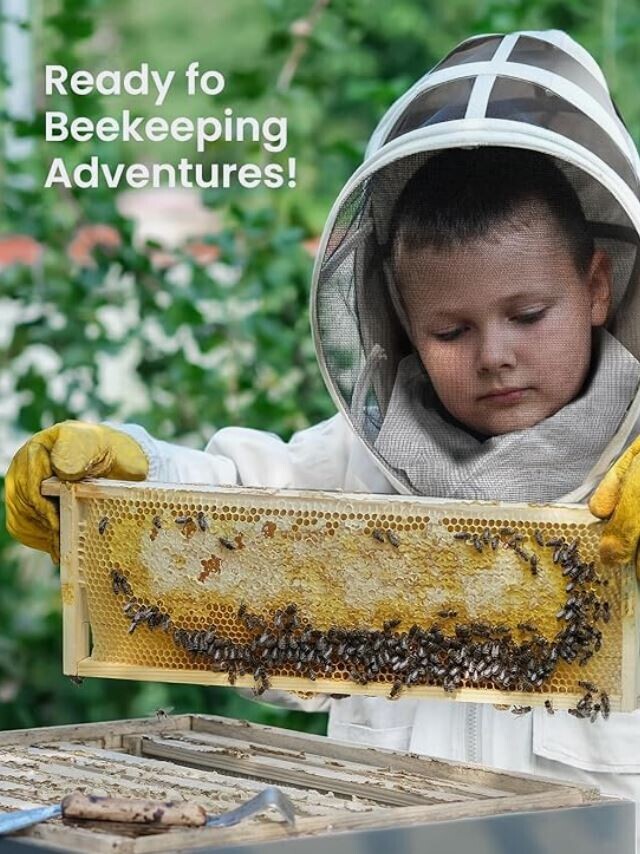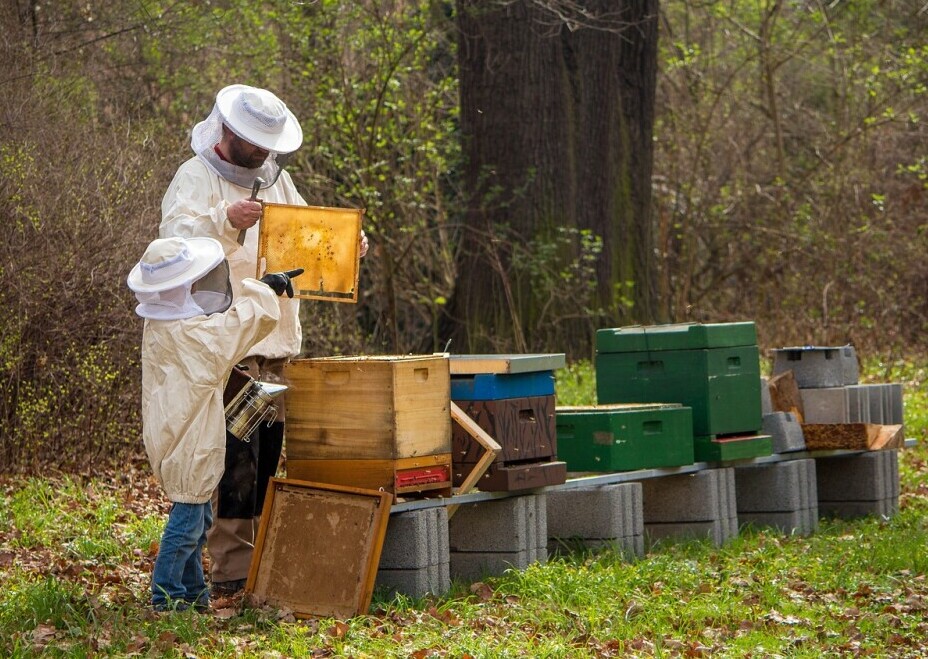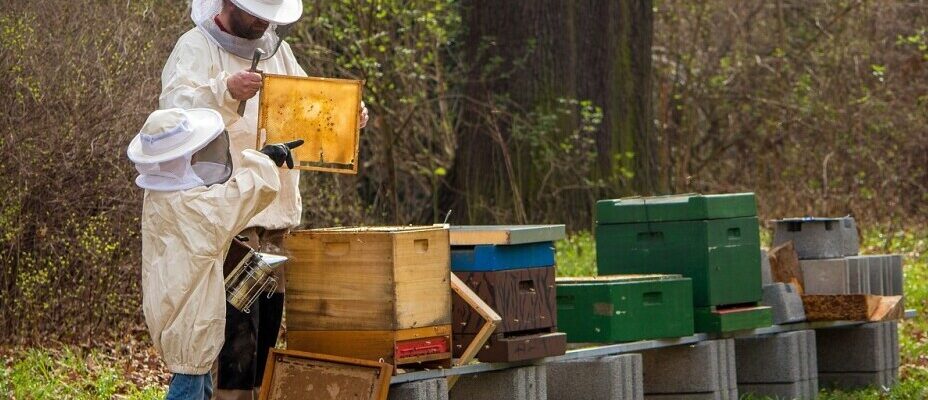Beekeeping isn’t just for adults—it can be an amazing adventure for kids too! Getting involved with bees helps kids learn about nature and develop a sense of responsibility. There’s a lot to love, like understanding the vital role bees play in our environment and seeing the magic of how honey is made.
The world of bees is full of wonder and learning opportunities. Kids can become bee detectives, discovering how these tiny creatures communicate, work together, and contribute to a healthy ecosystem. Imagine the excitement of watching bees in action and realizing they’re a big part of making the world go round.
Starting with beekeeping as a family ensures safety and fun. Share the experience with your kids to foster curiosity and build a closer connection with nature. As a family, you can learn how to manage beehives, extract honey, and even share your sweet rewards with friends and neighbors.
Exploring nature through beekeeping encourages kids to appreciate the environment more deeply. By understanding bees and their work, kids gain insight into the importance of biodiversity and conservation. Plus, it’s a great way to teach them about the delicious and healthy benefits of honey.
Learning about bees isn’t just educational; it’s super exciting! Children are naturally curious, and beekeeping offers endless ways to satisfy that curiosity. They’ll have plenty of tales to tell about their buzzing friends, making them ambassadors for bee conservation among their peers.
With the right guidance, beekeeping becomes a fun and secure activity for young ones. Investing time in understanding bee behavior and safety measures ensures that kids and bees can harmoniously share this sweet adventure.
Dressing for Success: Beekeeping Gear for Safety
Stepping into the world of beekeeping means gearing up to stay safe, especially for kids. It’s like dressing up for a special occasion, but this time, it’s all about protection.
The right gear is essential to keep everyone safe around bees. Start with a beekeeping suit that covers from head to toe, made of thick material to prevent stings. It’s not just about keeping bees out; it’s also about ensuring kids can move comfortably while exploring the hive.

CHECK OUT PRICING HERE
Don’t forget the veil! It’s the most important piece, guarding the face and neck. Kids will still be able to see everything while staying safe from curious bees. A hat with the veil attached gives the additional bonus of keeping cool.
Gloves are your hands’ best friend in the hive. Choose ones that fit well but still allow for some finger dexterity. Rubber or leather gloves are great choices—just make sure they’re snug but not too tight.

CHECK OUT PRICING HERE
Footwear matters too. Boots that cover the ankles and tuck under the suit ensure no sneaky bees find their way inside. It’s all about creating a bee-proof barrier!
Safety starts with preparation, and understanding each part of the gear makes kids more confident and relaxed around their bee buddies. With the right gear, kids can focus on learning and having fun, knowing they’re well-protected.
Beehive Know-How: Understanding Your Buzzing Friends
A beehive is where all the magic happens, and understanding its structure is key for any young beekeeper. It’s not just about honey; a hive is a bustling community full of busy bees with important roles.
First up, let’s talk about the queen bee. She’s the star of the show, and her job is to keep the hive growing by laying thousands of eggs. It’s important for kids to know that she’s got special treatment, and spotting her is always a fun challenge during hive checks.
Then, there are the worker bees. They handle everything—building the hive, collecting nectar, making honey, and even cleaning. These females really run the place, showing kids the power of teamwork and cooperation.

The drones are the male bees, and their role is to mate with a queen from another hive. While they don’t work like the others, they’re a crucial part of hive life, and their presence rounds out the hive’s family dynamics.
Understanding bees means being aware of their behavior. Bees communicate through dance and pheromones, which is super cool to watch. Showing kids how bees share information about food sources helps them appreciate the wonders of nature even more.
Teaching children to approach hives calmly and to recognize when bees are busy or need space fosters respect and patience. This not only keeps them safe but also helps them become confident beekeepers.
Safe Beekeeping Practices: Staying Buzz-free
When it comes to beekeeping, safety is top priority, especially for kids. Handling bees safely involves knowing the best practices to keep both beekeepers and bees relaxed and happy.
Start with the basics: always approach a hive slowly and quietly. Quick movements or loud noises might stress bees out, and nobody wants that! Kids should learn to be calm and patient, turning them into mindful beekeepers.
It’s crucial to work with an experienced adult. Guidance and supervision ensure that kids learn safe handling techniques and what to do in different situations. This way, they can spot potential hazards and handle them without panic.

Recognizing bee signals is another key skill. If bees are buzzing a bit too loudly or acting agitated, it might be a sign to step back. Teaching kids to read these cues helps in maintaining peace around the hive.
Timing matters too. Plan hive visits when weather is nice and during daylight hours when bees are out foraging. This way, the hive is less crowded and more manageable for newcomers.
Remind kids to avoid wearing strong scents from lotions or perfumes as these can attract unwanted attention from bees. Natural is always best when hanging out with our buzzing friends.
Keep bee-handling sessions short. Kids’ attention spans are small and bees have their work too. Short, regular visits help everyone stay chill.
Handling Bee Stings: First Aid and Prevention Tips
Bee stings can happen, but knowing how to handle them makes all the difference. For kids, it’s important to understand the sting isn’t a bee’s first choice—it’s usually a last resort when they feel threatened.
If a sting occurs, the first step is to remove the stinger quickly by scraping it off with a flat object like a credit card. This prevents more venom from entering the skin.
It’s normal for a sting to cause some swelling and redness. Washing the area with soap and water keeps it clean. Applying ice helps reduce swelling and eases discomfort.

Keeping an eye out for allergic reactions is important. If blisters appear, kids get super itchy or struggle to breathe, it’s time to seek medical help straight away. Keeping some antihistamine on hand for minor reactions can be useful.
To avoid stings, kids should be gentle and calm around bees. Teach them that sudden movements can make bees nervous. Being aware and respectful of the bees’ space goes a long way in preventing unwanted encounters.
Remind kids that bees are part of the ecosystem, and by learning to respect them, everyone stays safe and happy. Being prepared for a sting means it doesn’t have to be a scary experience—it can be a learning moment instead.
Creating a Bee-Friendly Environment: Promoting Safety and Sustainability
Encouraging kids to create a welcoming environment for bees is a fantastic way to promote safety and sustainability in beekeeping. It’s about finding balance and harmony in nature, ensuring that our buzzing friends thrive.
Educating young beekeepers on the importance of planting bee-friendly flowers can make a big difference. Kids can choose colorful plants that provide nectar and pollen, helping support bee populations and biodiversity.
Water sources are essential too, as bees need hydration just like us. Simple water features, like a shallow dish with stones, allow bees to drink safely without drowning.
Respecting bees’ natural habitats is another key point. Kids can learn to appreciate local environments and understand the impact of human activities on wild bee populations. It’s a great way to foster environmental stewardship.

Sustainable practices, like avoiding pesticides, make gardens and backyards safer for bees. Kids can participate in natural pest control methods, making it a fun journey in eco-friendly gardening.
Involving kids in these practices not only makes them feel empowered but also ensures that both bees and humans benefit from a safe and thriving ecosystem. Teaching them these values early sets a foundation for a life of environmental responsibility.

2 comments on “Beekeeping Safety Guidelines For Kids”
Bob Lynch
November 3, 2024 at 11:08 pmI love how you made the topic approachable and fun, especially for young aspiring beekeepers. The tips on wearing protective gear were super helpful!
I’m curious, though—what age do you think is best for kids to start getting involved in beekeeping? And do you have any favorite activities that make learning about bees even more exciting for them? Thanks for putting together such an engaging piece!
Randi
November 3, 2024 at 11:43 pmI’m glad you enjoyed the tips! For kids, starting around 7 or 8 works well. One activity they really enjoy is creating bee-friendly gardens—picking plants and watching bees visit is super rewarding! Or holding a frame and have them try to find the queen bee. Thanks for reading!